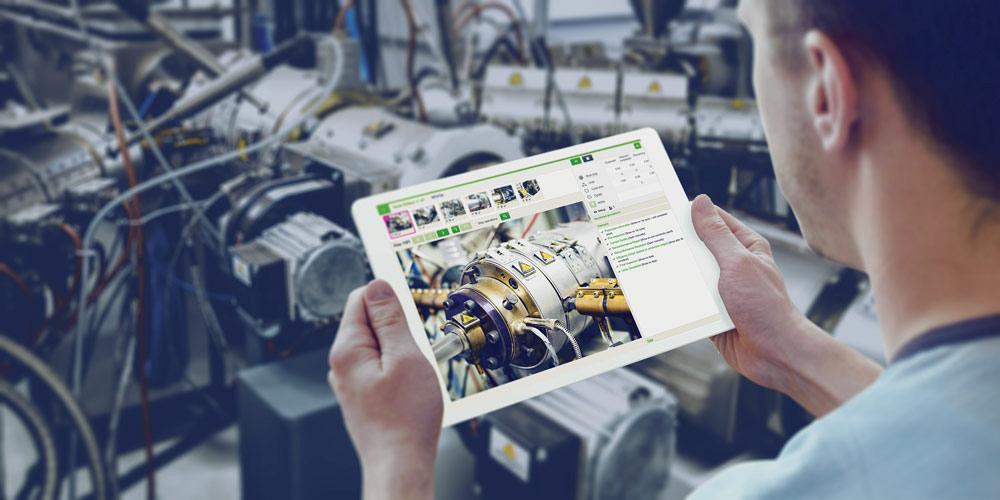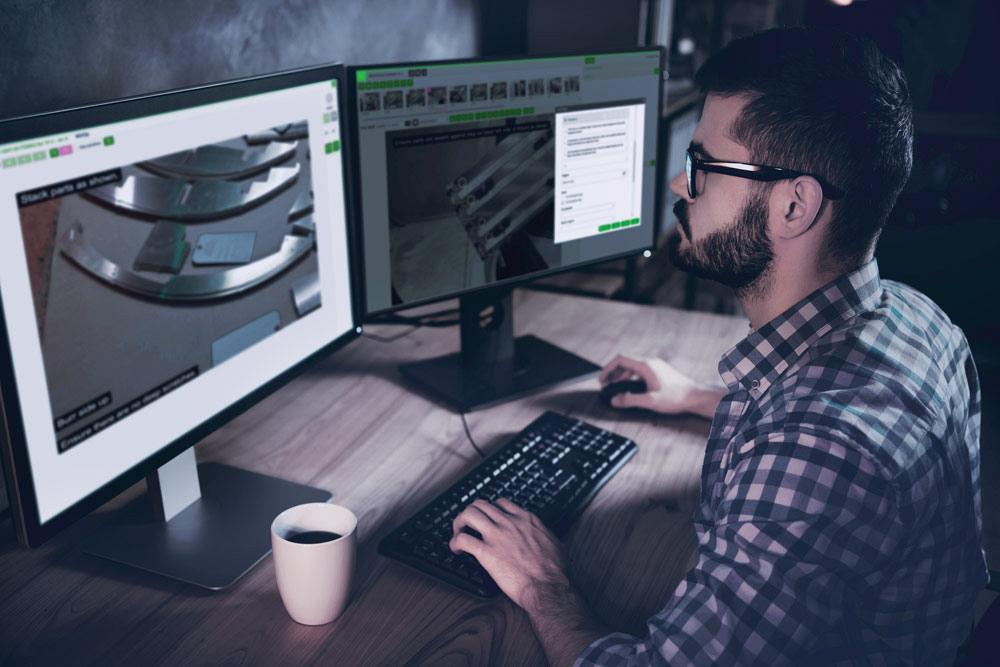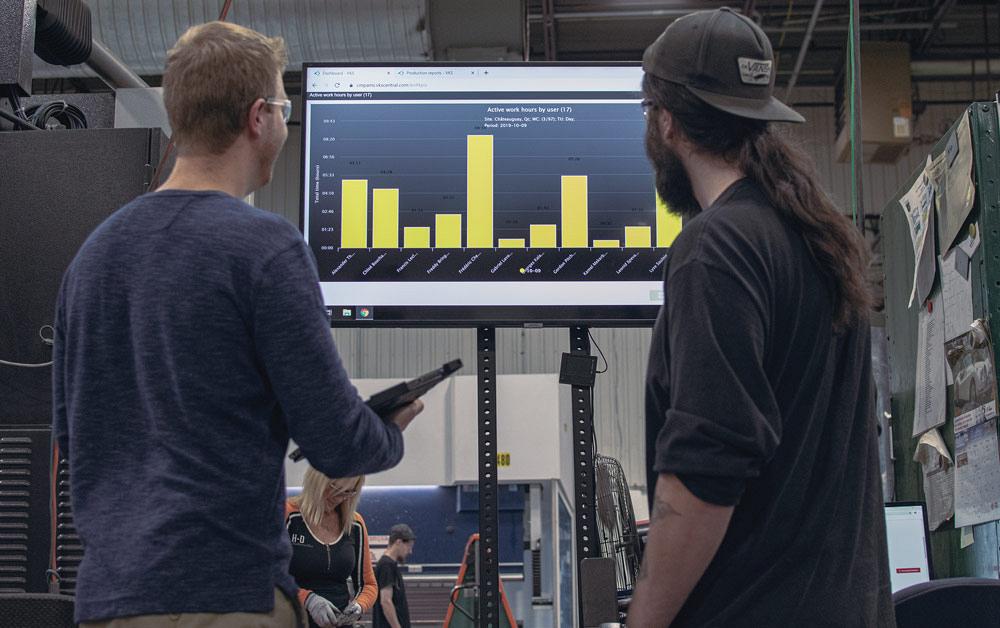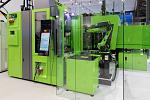Content Marketing Specialist
- FMA
- The Fabricator
- FABTECH
- Canadian Metalworking
Visual work instructions help improve productivity
Think visually to reduce errors, empower employees
- By Ben Baldwin
- August 25, 2021
- Article
- Automation and Software

Innovative technology such as work instruction software provides companies with the means to face challenges with smarter processes, better technology, and empowered workers.
The importance of standardization within manufacturing cannot be overstated. Henry Ford taught us that implementing a standard method is the best course of action for repeatable quality and precision. But there is a problem.
Standardization doesn't speak to modern-day manufacturing challenges, especially those that are marked by the recent changes and shifts in the industry. Things aren’t as cut and dried as they were in the early 20th century.
On the original assembly lines, a single worker performed one or two jobs. Now, because of the rise of product diversity, workers perform dozens of different jobs each day. This brings about a major challenge: How can workers retain all the needed training over so many jobs?
In light of this, manufacturers are turning to work instruction software to document key knowledge in a step-by-step digital platform. With this type of software, employees work through their tasks with comprehensive, interactive, and visual instructions.
This benefits standardization amid the sheer magnitude of complex processes, resulting in better-quality products and greater procedural compliance. The adoption of new technology also helps companies track and trace the ins and outs of their operations.
Meeting Expectations
As technology and products become more complex, processes and procedures need to be more modern and efficient. To remain competitive and meet contemporary expectations, manufacturing operations need to work smarter.
The manufacturing industry no longer is in a time when only a few products are available, and this expectation of product differentiation is not going anywhere soon. For this reason, many manufacturers have evolved towards mixed-model assembly productions, which is opting to create many different products as opposed to mass-producing one thing.
But this requires some innovative work to maintain efficiency and quality. Work instruction software is a means of guaranteeing that. Companies can now capture their best tribal knowledge and share it among the whole workforce.
When the workforce is supplied with the best-standardized procedures, all workers on the shop floor have the opportunity to work with the knowledge and skills of a senior employee.
Fast, Visual Assimilation
Though text is a powerful means of communication, our brains assimilate visual knowledge first. After all, a picture is worth a thousand words.

The adoption of visual work instruction technology also helps companies track and trace the ins and outs of their operations.
Without visuals, many contemporary manufacturing instructions are overly complex. To put this into perspective, the next time you need to assemble a piece of furniture, consider how long the instructions would need to be if there were no pictures. Visual instructions are fast and powerful, to say the least.
Instead of relying on dense text instructions, companies are progressively providing their workers with pictures and videos that result in faster assimilation of information and greater procedural adherence.
A key are the visual representations, which are foundational to work instruction software. Each step in a procedure is accompanied by visuals that accurately display the tasks and actions required. In many cases, if done correctly, there is little need for much text at all.
Interactive, Collaborative Interface
But the best software is more than a slide show. Manufacturing workers require an in-depth knowledge of their tasks. To build on the strong foundation of accurate visuals, work instruction software also must be interactive with the employee and collaborative within the whole manufacturing environment.
Workers interact with their digital instructions by entering key manufacturing data at various points throughout the process. The software collaborates with other systems to track and record key manufacturing data much like a traditional manufacturing execution system (MES). This provides manufacturers with important data from the same platform that operators are using to create value.
Additionally, work instruction software provides workers with another advantage when linking to users and other systems. By performing a task with IoT-connected tools and machines, work instruction software records quality data and ensures the right steps are followed for each step in the process.
The interactive and collaborative advantages of the software enable people to connect with their technology like never before.
Close the Skills Gap
Training employees the right way from the start is key for any workforce to thrive and produce value. Providing workers with the right training the first time is a fundamental attribute of a strong workforce.
But how often does training need to occur in a contemporary manufacturing career?
With the fast-paced advancements of Industry 4.0, training and development should become less and less about onboarding new hires and more about constantly learning and refining the skills of the workforce.

Visual work instruction software collaborates with other systems to track and record key manufacturing data much like a traditional manufacturing execution system.
It follows an L ≥ C model, in which L stands for learning and C for change. Learning must be greater than or equal to change for guaranteed survival. In other words, new technology requires more training, and up-to-date training equals a qualified, modern workforce.
Despite the fast-paced advancement and adoption of new technology, some manufacturers fail because they have not invested in updating and advancing their employees’ capabilities as they did their technology. Once this happens, it is hard for many manufacturers to keep up, resulting in a skills gap.
Worker skills and manufacturing technology need to develop in line with each other.
This leads to two fundamental questions:
- What tools are available to help close the skills gap within the industry?
- Is there a way to use new technology to keep workers qualified and up to date?
One answer to these questions is the implementation of work instruction software. Workers gain access to an easy-to-use platform that trains them on and off the shop floor. With this technology, training and guidance occur in every moment that employees are creating value. This means that with a visual and interactive guide, employees can produce on the shop floor sooner and with more confidence.
Effectively capturing and distributing knowledge ensures that the best methods are used with every production. The ability to empower employees with accurate training and up-to-date knowledge is a much-needed force in any industry.
Use Up-to-Date Records
In an Industry 4.0 environment, manufacturers can feel the weight of keeping their records and documents current. Updating new processes and procedures can be a daunting task, especially if multiple sources are involved.
But to improve operations, employees need documentation to be current. If processes and procedures prove difficult to update, then how likely will improvements happen?
Whether done in large or incremental steps, the ability to facilitate continuous improvement is a worthwhile investment. An option that opens up the pathways for all instructions, guides, and SOPs to be built up and enhanced is needed.
As opposed to paper, digital work instructions are located in one source. This enables companies to mass-edit their instructions and continually build better processes. For example, in the case of new safety regulations, manufacturers can update all work instructions to display the needed information before the operator begins work.

CMP, Chateauguay, Que., struggled with the typical challenges of a high-mix/low-volume manufacturing shop until adopting visual work instructions for its workers.
Work instruction software is a collaborative force within the whole manufacturing environment. This means that as the software interacts with the worker, it is also connected to systems, tools, and other users. This creates a digital ecosystem of collaborative technologies and people. The shop floor transforms into a smart facility where the worker is connected to all aspects of the operation.
An example of this is inventory management. As employees perform tasks and use materials, the work instruction software will track and collaborate with the enterprise resource planning (ERP) system. This connection enables a seamless and automatic method of controlling inventory requirements.
Another example is the use of “smart” tools. As work is performed, software and tools are capturing data for every action the operator takes. The technology goes so far as to automatically push the proper force values to tools and equipment for specific parts of the job.
In the case where certain bolts need different torque values, operators do not need to set anything manually. They only need to follow the work sequence and the technology takes care of the rest.
While operators are completing their tasks, the software is constantly working in the background and managing important functions. With this principle, connecting each worker to their technologies moves companies to gain a stronger and more connected workforce.
Data Collection Creates Value
Modern technologies make it easier to connect workers to processes in real time. This greatly enables people and technologies to work together as one well-oiled machine, and management gains an accurate view into their operation with advanced data collection.
Data collection is another key to understanding an industry’s operations. But sadly, much of this valuable data is either not collected or underutilized. Information on production times, inventory usage, and quality defects provides key insights that can be used to help companies evolve and continuously improve.
Work instruction software is a powerful means of collecting and analyzing your invaluable data. As work is performed, the software is constantly recording data that is easily accessible to the required teams. In the case of quality control, the software will alert the appropriate personnel if an assembly is not performed within the required specifications.
By collecting powerful data pertaining to their operation, manufacturers are better equipped to overcome these modern manufacturing challenges.
Following Technological Growth
Work instruction software also is inherently linked to other technologies. While it can stand on its own as an instructional resource, it can do so much more when integrated with a range of hardware and software. These include IoT, smart tools, big data and analytics, and other software systems. This makes work instruction software a flexible and long-lasting asset for modern businesses.
In other words, visual work instructions adapt, integrate, and communicate with current and future manufacturing technologies. As these systems and others grow and innovate, work instruction software continues to develop alongside them. This gives the software a seemingly limitless growth potential.
Born from a challenge
A case history
Work instruction software was born from the challenges of implementing Industry 4.0. It is a technology that empowers a workforce, isolates best practices, and captures key data and knowledge.
With any innovative technology, various stories illustrate how this software became the smart manufacturing tool that it is today.
One such story begins with CMP, a discrete manufacturer with facilities in Chateauguay, Que., and Binghamton, N.Y. In the late 2000s, CMP’s business was struggling with the typical challenges of a high-mix/low-volume manufacturing model. It was taking on new clients, each with different needs for quality and complex design.
The challenges that CMP faced were mainly related to productivity and quality.
First, it was difficult for its employees to remember the ins and outs of every process as customer demand became more diverse. This resulted in a workforce lacking in key process knowledge.
For this reason, productivity was negatively affected.
Second, different customers also had different quality requirements. CMP needed a way to adopt a new business model while also meeting the quality expectations of the customer. It decided that its paper instructions were not providing the stability or reliability it needed to run such a diverse production model.
With a wide array of complex products, CMP asked two questions that set the stage for an innovative solution and purpose-built system.
1. How can the operators and engineers output high levels of productivity on a complex assembly that they are not well acquainted with or may never have seen before?
2. How do we track and ensure high-quality standards when we might process many different jobs for different customers on the same day?
The answer to both questions was work instruction software.
In 2011 CMP adopted the technology of the newly formed technology provider VKS (Visual Knowledge Share). CMP saw a 95 per cent reduction in internal defects and a 20 per cent gain in productivity across its operations after installing visual work instruction software.
Modern technology and Industry 4.0 standards are challenging the manufacturing industry to do more and be more. The fast-paced advancements of technology and the progressive diversity of demand have brought us to an era that is ever-changing and continuously improving. Modern operations need to be smart, flexible, and resilient.
Innovative technology such as work instruction software provides companies with the means to face challenges with smarter processes, better technology, and empowered workers. This enables them to seize modern opportunities, one step at a time.
Ben Baldwin is content marketing specialist for Visual Knowledge Share, 1241 Rue Cascades, Châteauguay, Que. J6J 4Z2, 855-201-4656, www.vksapp.com.
About the Author
Related Companies
subscribe now


Keep up to date with the latest news, events, and technology for all things metal from our pair of monthly magazines written specifically for Canadian manufacturers!
Start Your Free Subscription- Industry Events
MME Saskatoon
- May 28, 2024
- Saskatoon, SK Canada
CME's Health & Safety Symposium for Manufacturers
- May 29, 2024
- Mississauga, ON Canada
DiPaolo Machine Tools Open House 2024
- June 4 - 5, 2024
- Mississauga, ON Canada
FABTECH Canada
- June 11 - 13, 2024
- Toronto, ON Canada
Zoller Open House & Technology Days 2024
- June 12 - 13, 2024
- Ann Arbor, MI




















